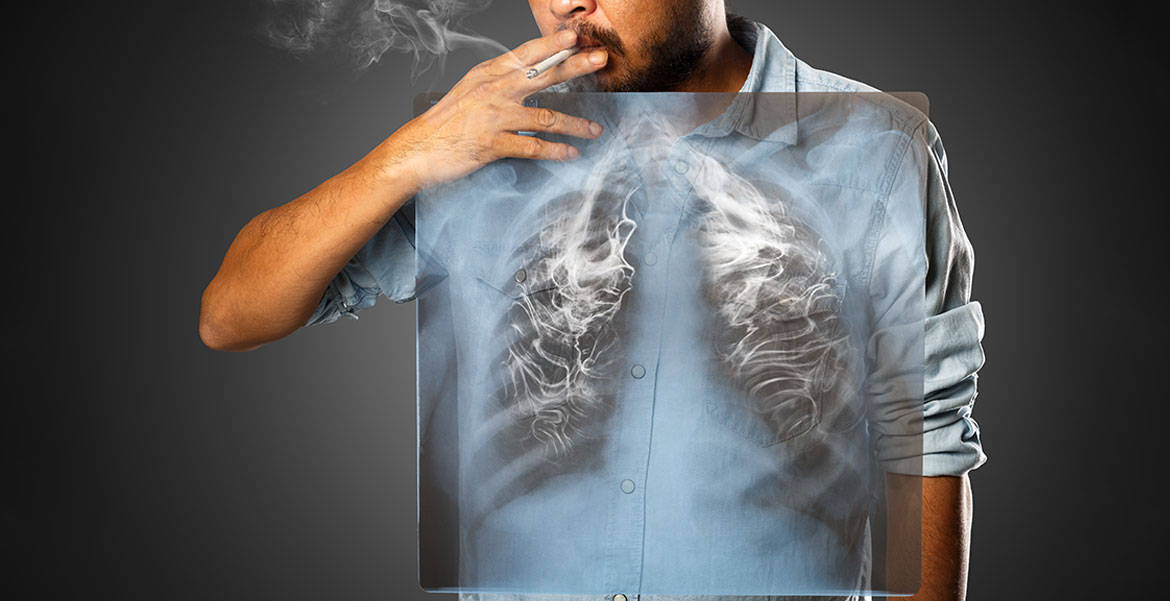Smoking and Cancer
Smoking, if not anything, has become a trend today and at the same time one of the most common causes of lung cancer, head and neck cancer, stomach cancer etc. Time and again we hear about smoking and how it can harm us in many ways, yet we continue to smoke and few of us end up with cancer with smoking as the main causative factor.
The more cigarettes you smoke per day, the more the cancer risk. With each repeated exposure, normal cells that line your lungs are increasingly damaged. Over time, the damage causes cells to act abnormally and eventually cancer may develop.
But here’s a catch! What if you don’t smoke, but you are exposed to cigarette or tobacco smoke constantly or frequently? Does your family member or friend smoke around you? Well, guess what? You are considered a passive smoker and you are at risk of developing cancer as well.
How is smoking a risk factor for developing cancer?
When you smoke, about 5000 chemicals are released in our body and most of these are harmful. To mention a few, toluene, arsenic, tar, butane, lead etc. The carcinogens from the cigarette enter our body and damage our DNA which controls how our cells behave. Tobacco smoke also contains tar and the poison gases carbon monoxide and nitrogen oxide. The ingredient that produces the effect people are looking for is nicotine, an addictive drug and one of the harshest chemicals in tobacco smoke. Cigarette chemicals make it harder for cells to repair any DNA damage. They also damage the parts of DNA that protect us from cancer. It’s the build-up of DNA damage in the same cell over time that leads to cancer.
Is there a safe smoking level established?
There is no safe amount of cigarette smoking. Occasional smoking is also considered harmful. Therefore it’s better to refrain from smoking and protect yourself from second hand smoking as well.
How to get rid of smoking?
● Motivate yourself to quit smoking and stay positive. You might lose your track on this path, but never lose hope. Go back and fight hard. Make a list of reasons that can help you quit and remind yourself of the benefits.
● Gradually reduce the number of cigarettes per session and the frequency of smoking.
● Get help- talk to someone like your friend or a family member who can help you quit smoking. If this does not help, do not hesitate to consult a doctor or a therapist or a support group.
● Get moving- research has started to show that withdrawal symptoms and cravings for smoking decrease during exercise.
● Use relaxation techniques- if you are someone triggered to smoke due to stress, then use relaxation techniques like deep-breathing exercises, muscle relaxation, yoga, visualization, massage or listening to calming music.
● Keep substitutes handy that you can suck or chew on, such as cinnamon sticks, carrots, pickles, apples, celery, raisins, hard candy.
● Learn about the side effects of quitting smoking and learn how to manage the same. Contact your doctor or therapist or support group to help you with the same.
Tags: Smoking and cancer, lung cancer, head and neck cancer, stomach cancer, main risk factor, 5000 chemicals, toluene, arsenic, tar, butane, lead, poison gases carbon monoxide and nitrogen oxide, nicotine, an addictive drug, DNA damage, no safe level of cigarette smoking, quit smoking and stay positive, Get help, consult a doctor or a therapist or a support group, withdrawal symptoms, cravings for smoking, exercise, Use relaxation technique, cancer









